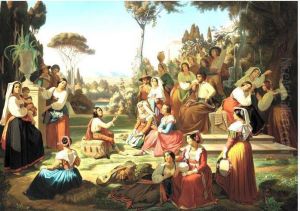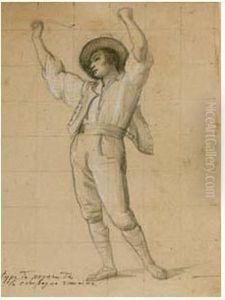Omer Pierre L. Charlet Paintings
Omer Pierre L. Charlet, born in 1861 and passing away in 1938, was a French artist whose work has been celebrated for its contribution to the Impressionist and Post-Impressionist movements. Although not as widely recognized as his contemporaries like Claude Monet or Vincent van Gogh, Charlet's oeuvre offers a significant glimpse into the late 19th and early 20th-century French art scene. His paintings are characterized by their vibrant use of color, light, and innovative compositions which echo the broader trends of his time while also displaying a unique personal style.
Charlet's early life was steeped in the rich cultural milieu of France, which undoubtedly influenced his artistic development. He received formal training at the École des Beaux-Arts in Paris, where he was exposed to the works of the great masters and the burgeoning Impressionist movement. This period was crucial for Charlet, as it allowed him to refine his technique and develop his distinct approach to painting. He was particularly drawn to landscapes and urban scenes, often capturing the changing effects of light and atmosphere with a delicate sensitivity.
Throughout his career, Charlet exhibited his work in various salons and galleries, gradually gaining recognition among art critics and patrons. His paintings were celebrated for their lyrical beauty and emotional depth, capturing the essence of the French countryside and Parisian life with a poignant intimacy. Despite facing the challenges of an evolving art market and the advent of modernist movements, Charlet remained committed to his artistic vision, continuing to paint until his death in 1938.
After his passing, Charlet's work fell into relative obscurity, overshadowed by the giants of Impressionism and Post-Impressionism. However, recent years have seen a resurgence of interest in his paintings, with art historians and collectors alike reevaluating his contribution to the art world. Today, Charlet's works are included in several prestigious collections and museums, recognized for their contribution to the rich tapestry of French art history.


